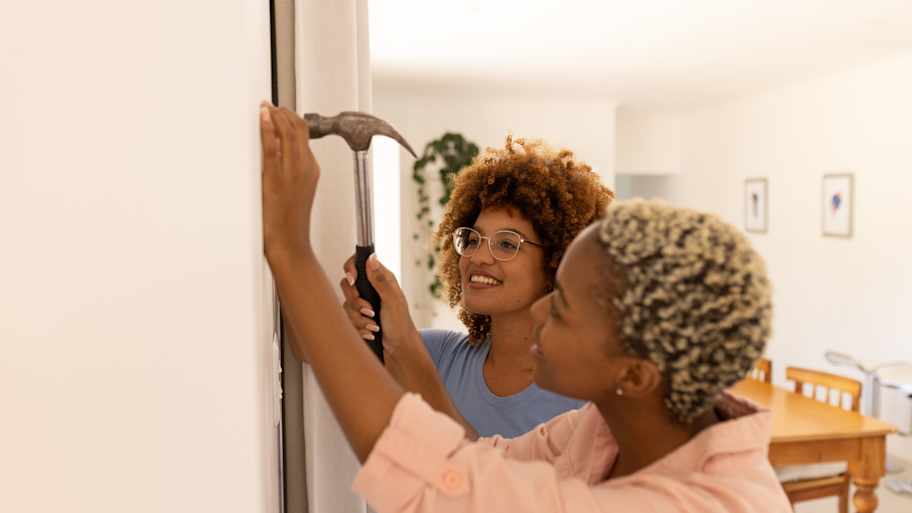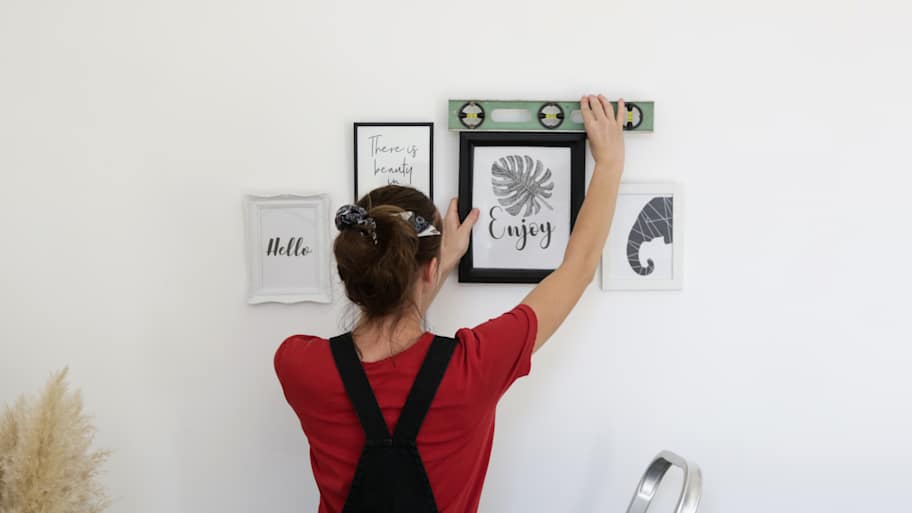
How much do hot tub movers cost? Find out the average prices for professional hot tub movers, whether you’re moving it on your property or to a new home.
These tricks make every room in the house picture-perfect


Whether it’s cherished family photos or brand new artwork, hanging pictures on the walls is a timeless way to spruce up a living space and make it feel like home. However, one small mistake will leave you patching misplaced holes, rearranging picture frames, and staring at a level over and over again. We’ve put together eight handy tips to help you hang pictures with all of the style and none of the stress.
Before hanging your pictures, it’s best to figure out the size of the wall you’re working with. Use a tape measure to find the length and width of the hanging area. This should prevent mistakes, especially if you’re hanging multiple pictures at once or a frame that takes up a lot of space.
You can safely hang lightweight pictures on drywall alone, but you must mount heavy frames (generally anything over 20 pounds) from wall studs for proper support. Wall studs are vertical pieces of wood that run from the floor to the ceiling and frame your home, spaced 16 or 24 inches apart.
There are several ways to locate the wall studs in your house. Using a stud finder is easiest, but you can locate them simply by knocking against the wall with your knuckles until you hear a solid, higher-toned sound.

After measuring the wall and locating the studs, you have all the information needed to plan the picture arrangement. Sketching the layout on grid paper or laying all the picture frames on the floor is a great way to visualize the final look. While you should always feel free to follow the image inspiration in your head, here are a few design tips from the pros:
Hang pictures roughly at eye level, around 57 to 60 inches above the floor.
Place larger pictures in the middle when setting up a gallery wall.
Leave 2 to 5 inches between frames, and keep the spacing consistent.
Hang pictures 6 to 8 inches above furniture.
The 2/3 Rule is a design principle that suggests an ideal ratio between furniture and any wall art hanging above it. For aesthetic balance, wall art should be two-thirds the width of the furniture beneath it. If your couch is 90 inches wide, the picture or group of pictures above it should be 60 inches wide.

Some pictures are light enough to hang with nails, but heavier ones (over five pounds) require wall anchors. There are many kinds, including molly bolts, toggle bolts, threaded drywall anchors, and more.
If a picture frame has a sawtooth hanger on the back, it’s safe to use nails or screws. If a frame has D-rings, you may be able to use picture wire to secure it. Some frames even rely on adhesive materials for hanging.
When in doubt, hire a picture hanging expert in your area to ensure the wall decor turns out exactly how you want.
The wall material in your house may pose different challenges when hanging pictures. Fragile materials like plaster and drywall are versatile and receptive to various hanging supplies. However, you must carefully mount the pictures, as the anchors are more likely to come loose in these materials.
It’s worth mounting on the studs behind plaster or drywall when possible. In contrast, it’s harder to secure nails or screws into masonry walls made from brick or concrete, but these sturdy stone materials offer more support.
Place a strip of painter’s tape across the back of the picture frame, covering the hanging hardware. Use a pencil to mark the spots where the nails or wall anchors need to go. After that, remove the painter’s tape from the picture frame and place it on the wall where you want the picture to hang. From there, all you have to do is install the hanging equipment through the marks you made on the painter’s tape before hanging the picture.

After hanging the frame, it’s worth checking that everything is straight using a level. You can use a laser level, which projects vertical and horizontal lines across a wall for easy comparison. A traditional carpenter’s level does the trick, too. When using the latter, place the carpenter’s level at the center of the picture frame and slide it right and left to see if the bubble moves. If it does, reposition the picture frame as needed.
From average costs to expert advice, get all the answers you need to get your job done.

How much do hot tub movers cost? Find out the average prices for professional hot tub movers, whether you’re moving it on your property or to a new home.

The cost to move a tiny house depends on its weight, distance, and what type of moving equipment is required. Our guide can help you budget for your move.

The cost to rent a trailer depends on its size and type and how far you’re traveling with it. This guide compares trailer options and their prices.

You’ve just moved into a new home and aren’t sure which projects to tackle first or what can wait. Read on for advice on the to-dos you should take on initially.
Some days work better than others when it comes to moving to a new home. Consider these factors when planning your moving date.

Knowing exactly what items to pack can help your move go smoothly. Check out our list of moving essentials to make your move less stressful.